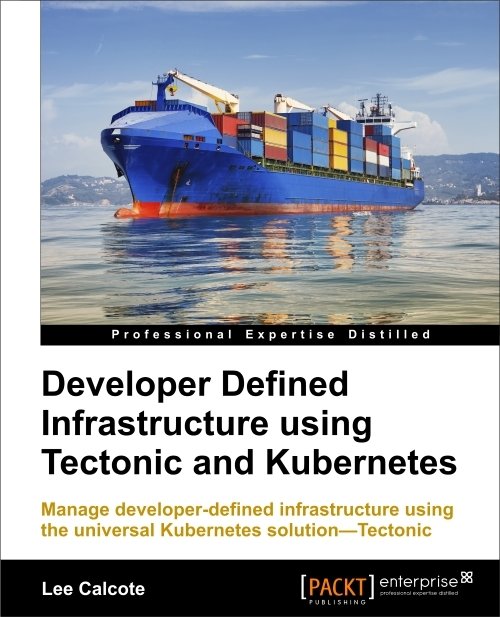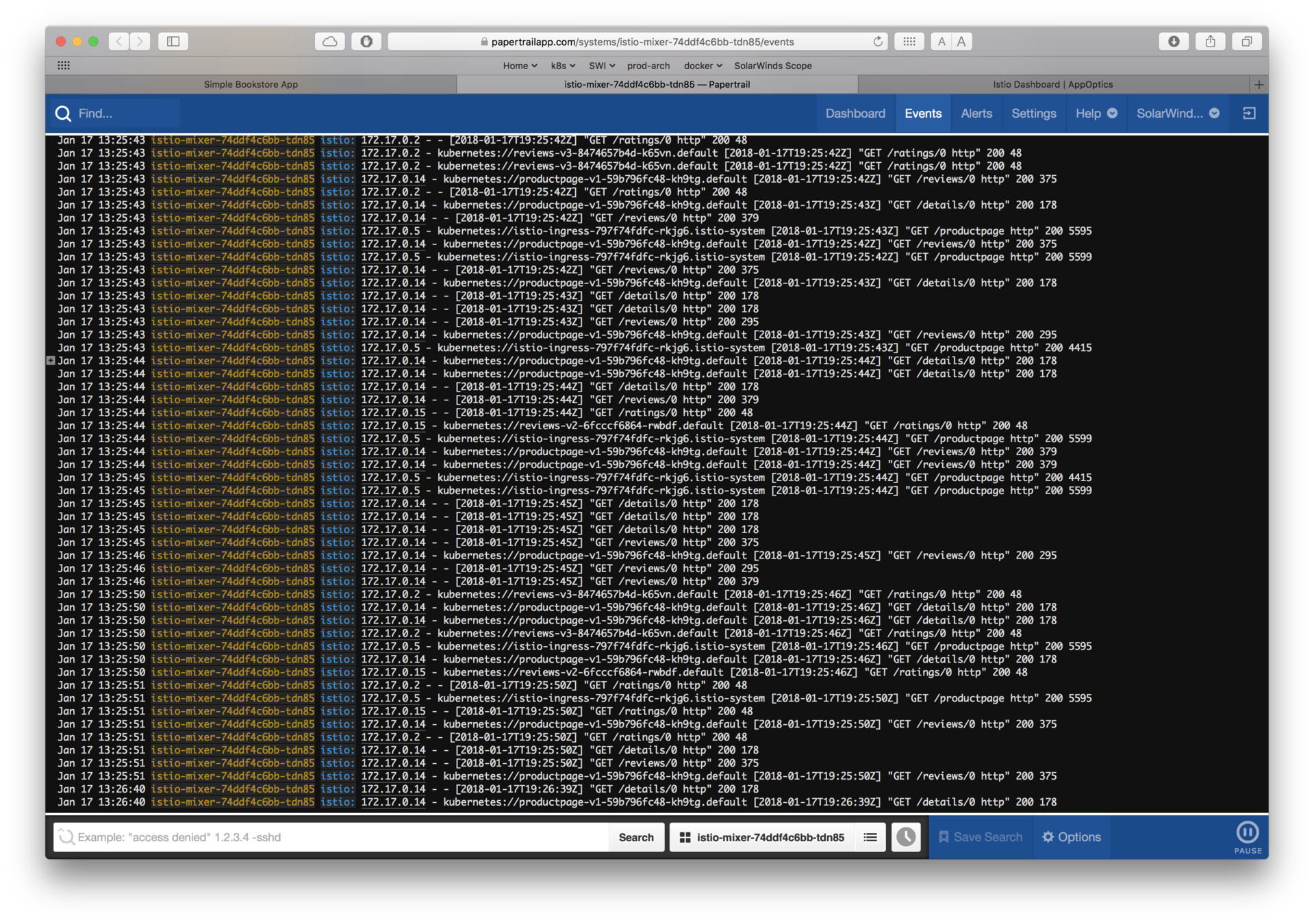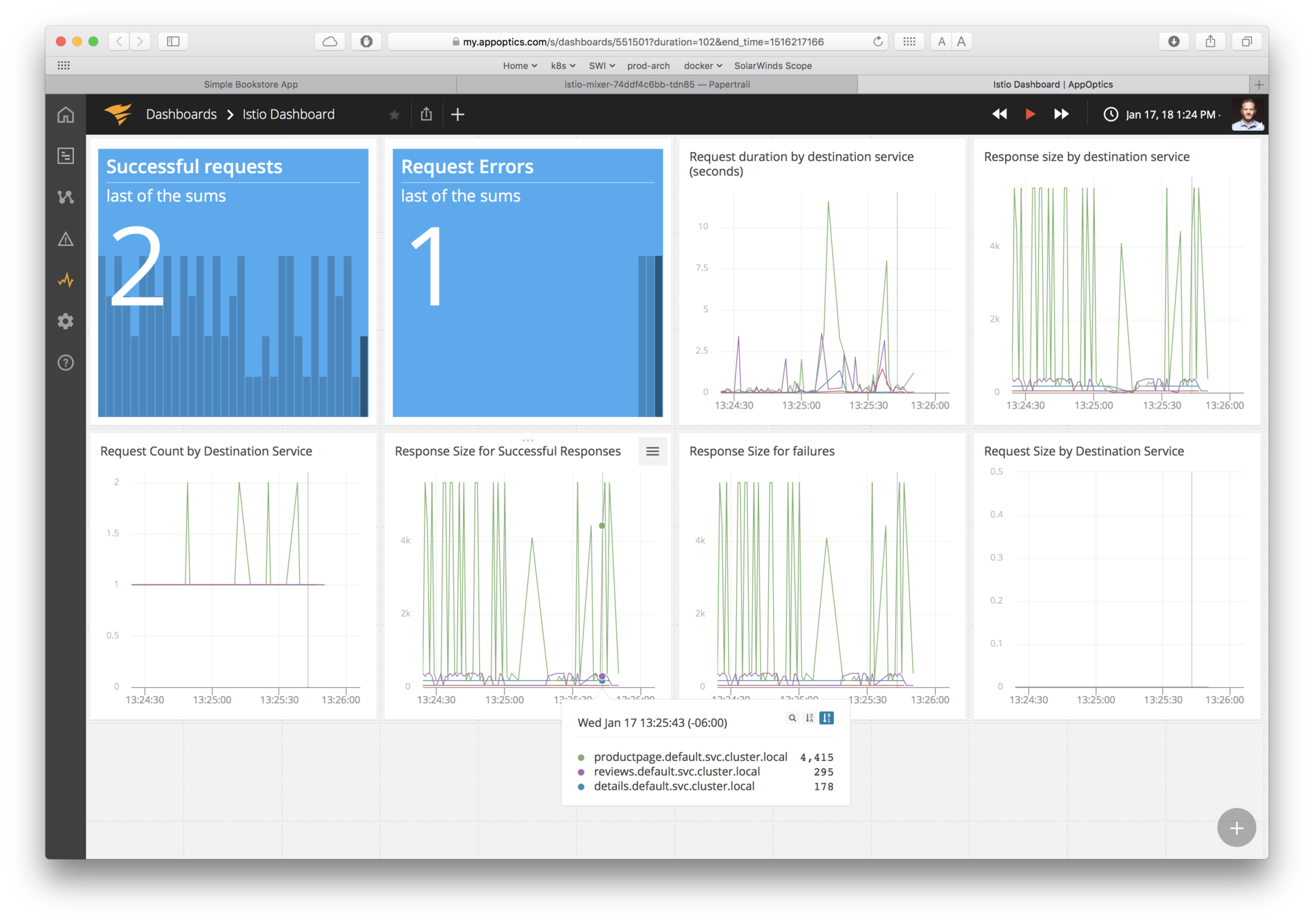Lee Calcote
Layer5, Founder

Open Source Summit:
Service Meshes
lee@layer5.io
clouds, containers, functions, applications, and their management
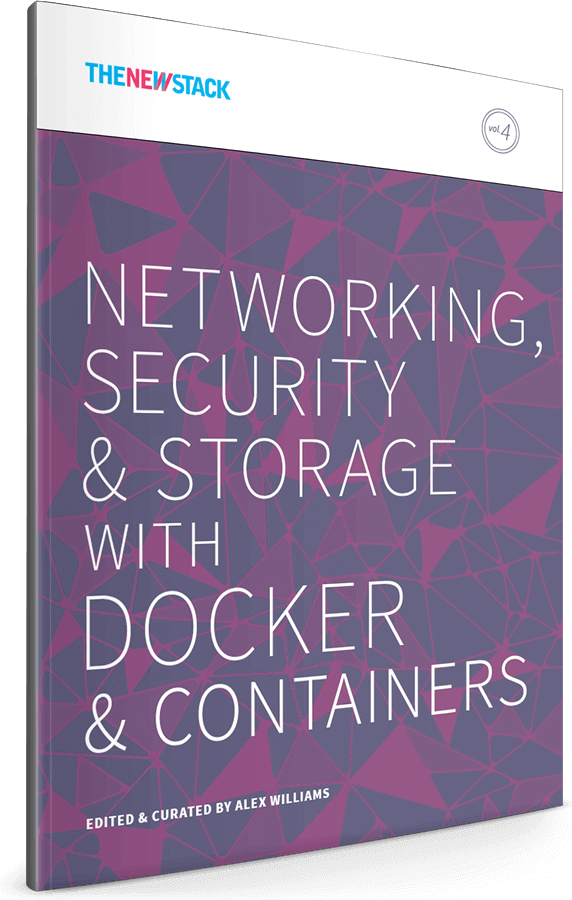

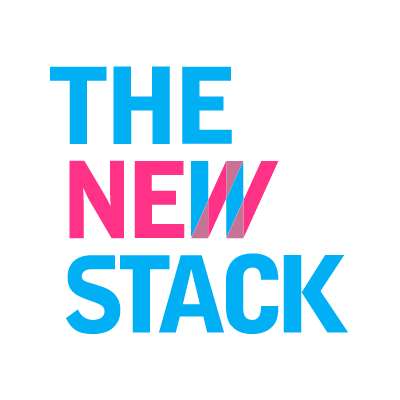







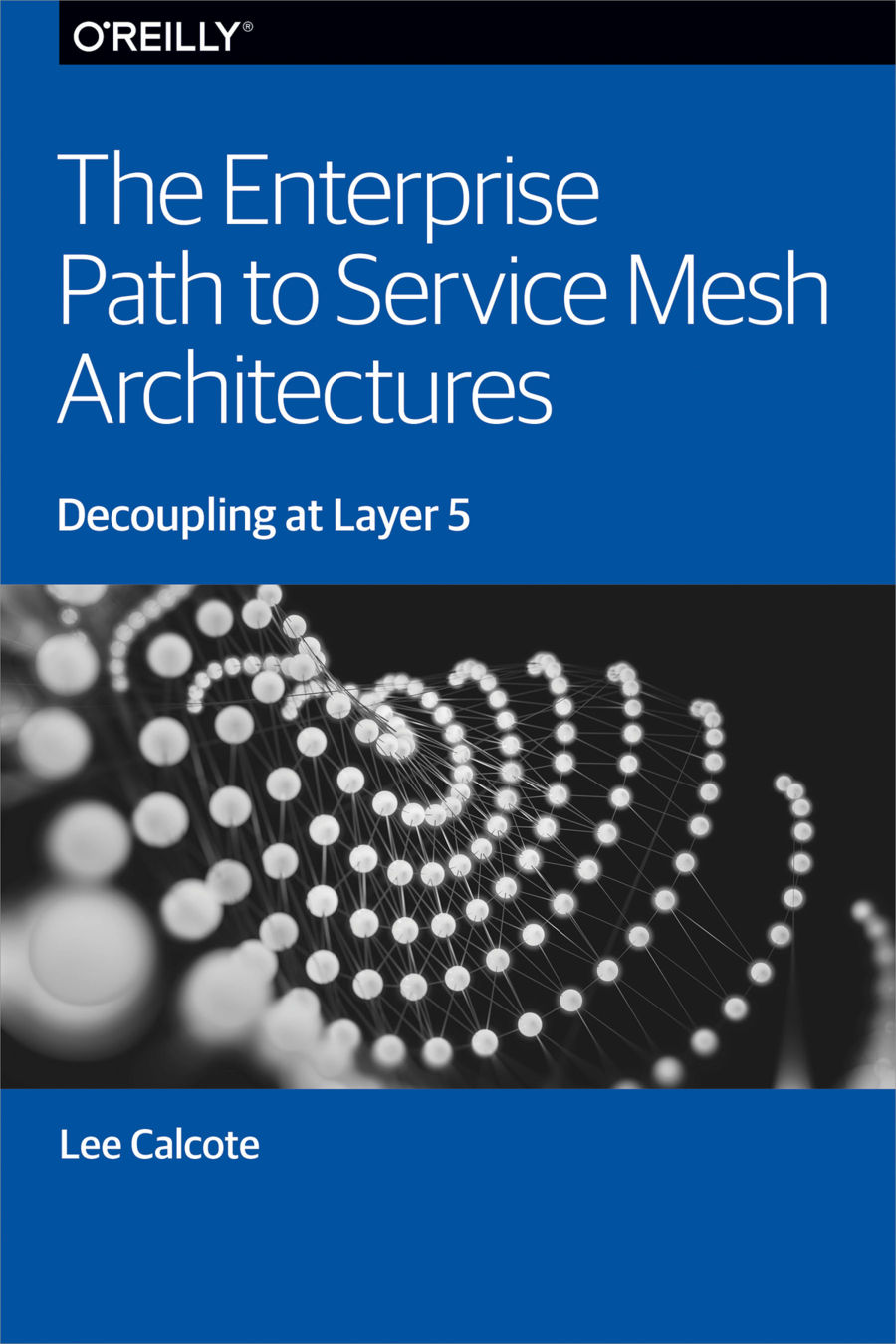

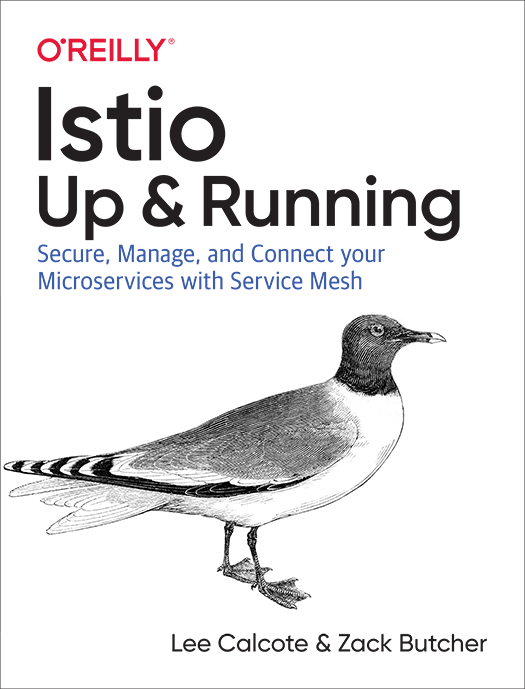

layer5.io/books

Benefits
First few services are relatively easy
Democratization of language and technology choice
Faster delivery, service teams running independently, rolling updates
Challenges
Next 10 or so may introduce pain
Language and framework-specific libraries
Distributed environments, ephemeral infrastructure, out-moded tooling
Microservices
layer5.io/landscape
Which is why...
I have a container orchestrator.

Core
Capabilities
-
Cluster Management
-
Host Discovery
-
Host Health Monitoring
-
-
Scheduling
-
Orchestrator Updates and Host Maintenance
-
Service Discovery
-
Networking and Load Balancing
-
Stateful Services
-
Multi-Tenant, Multi-Region
Additional
Key Capabilities
-
Application Health and Performance Monitoring
-
Application Deployments
-
Application Secrets

minimal capabilities required to qualify as a container orchestrator
Service meshes generally rely on these underlying layers.
Which is why...
I have an API gateway.
Microservices API Gateways
-
Ambassador uses Envoy
-
Kong uses Nginx
-
OpenResty uses Nginx
north-south vs. east-west
What do we need?
• Observability
• Logging
• Metrics
• Tracing
• Traffic Control
• Resiliency
• Efficiency
• Security
• Policy
a Service Mesh
What is a Service Mesh?
a dedicated layer for managing service-to-service communication
So, a microservices platform?
obviously.
Orchestrators don't bring all that you need
and neither do service meshes,
but they do get you closer.
Missing: application lifecycle management, but not by much
partially.
a services-first network
Missing: distributed debugging; provide nascent visibility (topology)
Why use a Service Mesh?
to avoid...
-
Bloated service code
-
Duplicating work to make services production-ready
-
Load balancing, auto scaling, rate limiting, traffic routing...
-
-
Inconsistency across services
-
Retry, tls, failover, deadlines, cancellation, etc., for each language, framework
-
Siloed implementations lead to fragmented, non-uniform policy application and difficult debugging
-
-
Diffusing responsibility of service management
Observability
what gets people hooked on service metrics
Goals
-
Metrics without instrumenting apps
-
Consistent metrics across fleet
-
Trace flow of requests across services
-
Portable across metric back-end providers
You get a metric! You get a metric! Everyone gets a metric!
© 2018 SolarWinds Worldwide, LLC. All rights reserved.
Traffic Control
control over chaos
- Traffic splitting
- L7 tag based routing?
- Traffic steering
- Look at the contents of a request and route it to a specific set of instances.
- Ingress and egress routing
Resilency
- Systematic fault injection
-
Timeouts and Retries with timeout budget
-
Control connection pool size and request load
-
Circuit breakers and Health checks
content-based traffic steering
Timeouts & Retries
Web
Service Foo
Timeout = 600ms
Retries = 3
Timeout = 300ms
Retries = 3
Timeout = 900ms
Retries = 3
Service Bar
Database
Timeout = 500ms
Retries = 3
Timeout = 300ms
Retries = 3
Timeout = 900ms
Retries = 3
Deadlines
Web
Service Foo
Deadline = 600ms
Deadline = 496ms
Service Bar
Database
Deadline = 428ms
Deadline=180ms
Elapsed=104ms
Elapsed=68ms
Elapsed=248ms
DEV
OPS
Layer 5
where Dev and Ops meet
Problem: too much infrastructure code in services
Service Mesh Architecture
Service Mesh Architecture
Data Plane
- Touches every packet/request in the system.
- Responsible for service discovery, health checking, routing, load balancing, authentication, authorization, and observability.
No control plane? Not a service mesh.
Ingress Gateway
Egress Gateway
Service Mesh Architecture
Control Plane
Data Plane
- Touches every packet/request in the system.
- Responsible for service discovery, health checking, routing, load balancing, authentication, authorization, and observability.
- Provides policy, configuration, and platform integration.
- Takes a set of isolated stateless sidecar proxies and turns them into a service mesh.
- Does not touch any packets/requests in the data path.
No control plane? Not a service mesh.
Ingress Gateway
Egress Gateway
Service Mesh Architecture
Control Plane
Data Plane
- Touches every packet/request in the system.
- Responsible for service discovery, health checking, routing, load balancing, authentication, authorization, and observability.
- Provides policy, configuration, and platform integration.
- Takes a set of isolated stateless sidecar proxies and turns them into a service mesh.
- Does not touch any packets/requests in the data path.
No control plane? Not a service mesh.
Ingress Gateway
Egress Gateway
Management
Plane
- Provides monitoring, backend system integration, expanded policy and application configuration.
BookInfo Sample App
Reviews v1
Reviews Pod
Reviews v2
Reviews v3
Product Pod
Details Container
Details Pod
Ratings Container
Ratings Pod

Product Container
Reviews Service
Ratings Service
Details Service
Product Service
BookInfo Sample App on Service Mesh
Reviews v1
Reviews Pod
Reviews v2
Reviews v3
Product Pod
Details Container
Details Pod
Ratings Container
Ratings Pod

Product Container
Envoy sidecar
Envoy sidecar
Envoy sidecar
Envoy sidecar
Envoy sidecar
Reviews Service
Enovy sidecar
Envoy ingress







Product Service
Ratings Service
Details Service
Pilot
Citadel
Mixer
Control Plane
Data Plane
istio-system namespace
policy check
Foo Pod
Proxy Sidecar
Service Foo
tls certs
discovery & config
Foo Container
Bar Pod
Proxy Sidecar
Service Bar
Bar Container
Out-of-band telemetry propagation
telemetry
reports
Control flow during request processing
application traffic
Application traffic
application namespace
telemetry reports
Istio Architecture

Galley
Ingress Gateway
Egress Gateway
Control Plane
Data Plane
linkerd-system namespace
Foo Pod
Proxy Sidecar
Service Foo
Foo Container
Bar Pod
Proxy Sidecar
Service Bar
Bar Container
Out-of-band telemetry propagation
telemetry
scarping
Control flow during request processing
application traffic
Application traffic
application namespace
telemetry scraping
Architecture
destination
Prometheus
Grafana
tap
dashboard
CLI
proxy-api
public-api
Linkerd
Deployment Models
Freely Available
at

Adopting a service mesh
Adopter’s Dilemma
Which service mesh to use?
What's the catch? Nothing's for free.
Playground
WHICH SERVICE MESH SHOULD I USE AND HOW DO I GET STARTED?
Learn about the functionality of different service meshes and visually manipulate mesh configuration.
Performance Benchmark
WHAT OVERHEAD DOES BEING ON THE SERVICE MESH INCUR?
Benchmark the performance of your application across different service meshes and compare their overhead.
layer5.io/meshery
@lcalcote
Meshery
a multi-service mesh performance benchmark and playground

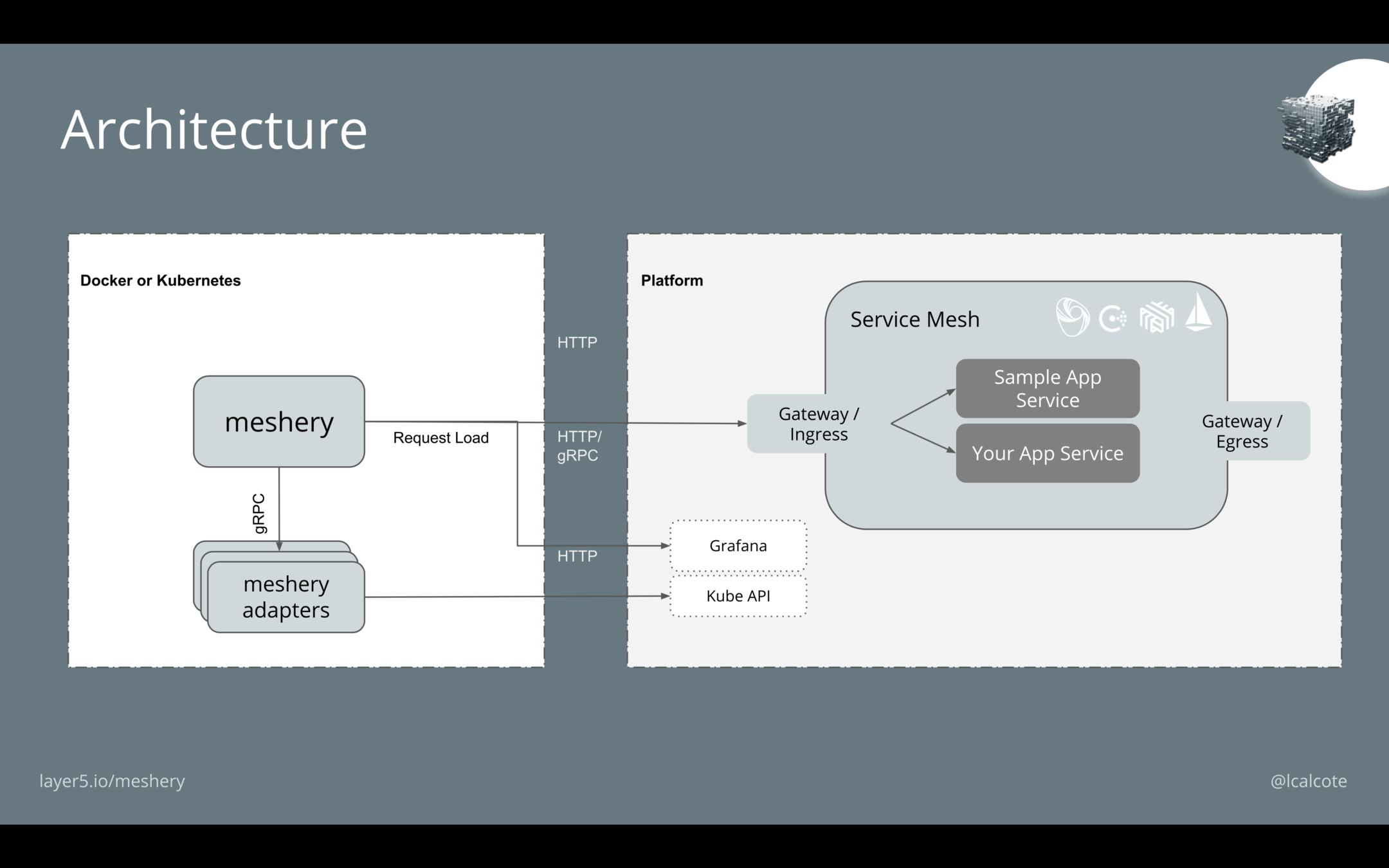
Side-by-Side Performance Comparison
Istio
Linkerd
Octarine
NSM
App Mesh
@lcalcote
results coming forthcoming at KubeCon EU...
Consul
Up next...
(service meshes contributing adapters)
Kubernetes
(no mesh)

Demo
Relative
Showdown!
Slowdown
@lcalcote
layer5.io/meshery

| Cores | Threads | Istio (2) | Linkerd |
|---|---|---|---|
| 8 | 8 | 1 | 1 |
| 8 | 16 | 1.7 | 1.8 |
| 8 | 32 | 3.2 | 3.4 |
| 8 | 100 | 9.3 | 9.6 |
(2) mTLS on, tracing off
Relative
Showdown!
Slowdown
@lcalcote
layer5.io/meshery

| Cores | Threads | Istio (1) | Istio (2) | Linkerd |
|---|---|---|---|---|
| 8 | 8 | 1 | 1 | 1 |
| 8 | 16 | 1.4 | 1.7 | 1.8 |
| 8 | 32 | 18.4 | 3.2 | 3.4 |
| 8 | 100 | 52.2 | 9.3 | 9.6 |
(1) mTLS on, tracing on
(2) mTLS on, tracing off
Mixer
Mixer
Control Plane
Data Plane
istio-system namespace
Foo Pod
Proxy sidecar
Service Foo
Foo Container
Out-of-band telemetry propagation
Control flow during request processing
application traffic
application traffic
application namespace
telemetry reports



an attribute processing engine
Different Response Sizes
@lcalcote
layer5.io/meshery

@lcalcote
layer5.io/meshery

Different Response Sizes
@lcalcote
layer5.io/meshery

Different Response Sizes
Service Mesh Benchmark Specification
A project and vendor-neutral specification for capturing details of:
-
Environment / Infrastructure
-
Number and size of nodes, orchestrator
-
-
Service mesh and its configuration
-
Service / application details
Bundled with test results.

github.com/layer5io/service-mesh-benchmark-spec

@lcalcote
layer5.io/meshery
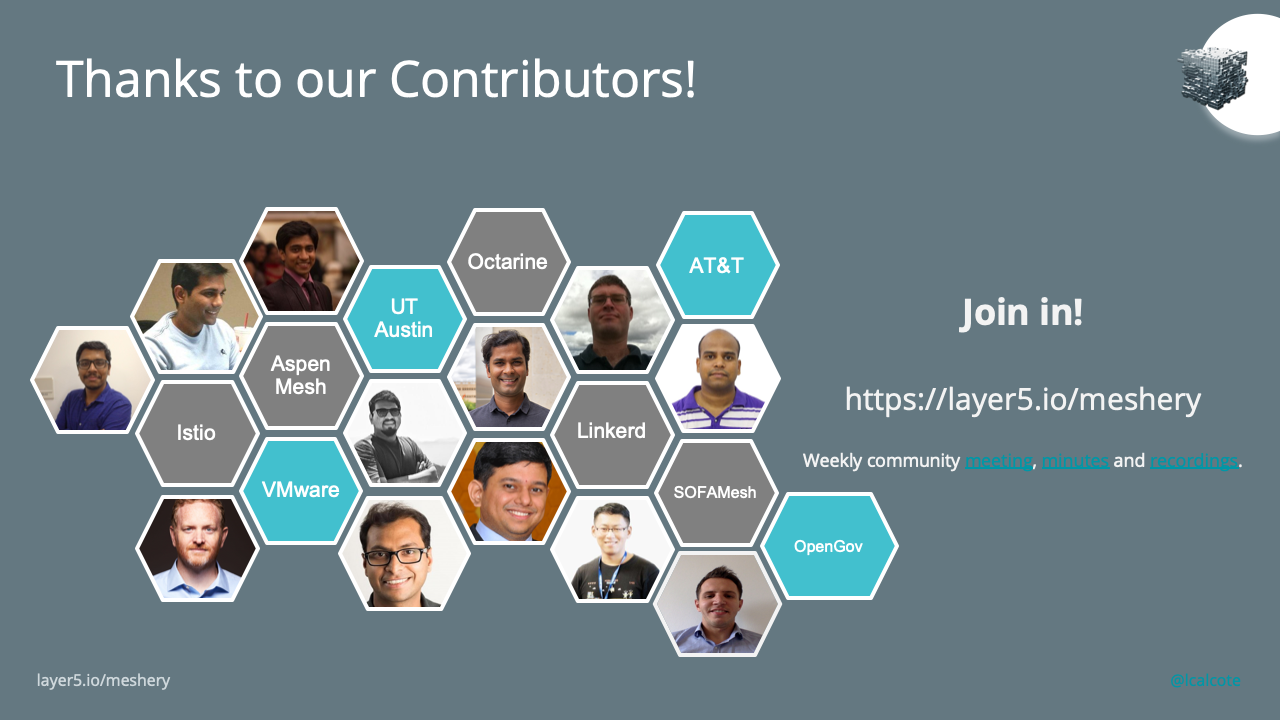
@lcalcote
layer5.io/meshery
LEE CALCOTE
Layer5, Founder

Open Source Summit:
Service Meshes


